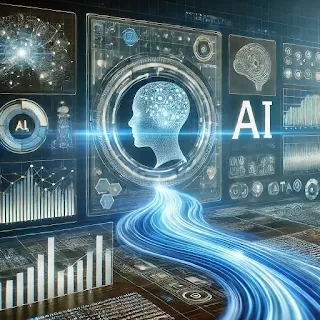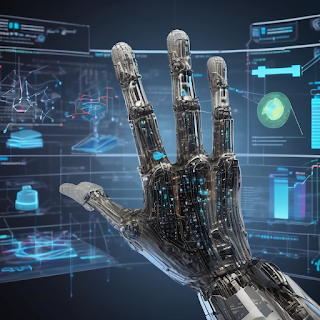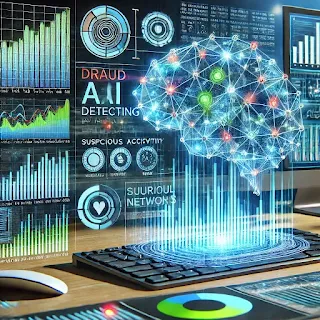Every day, over 2.5 quintillion bytes of data are generated, from social media posts to complex transaction records. The era of big data is upon us, and it’s growing at an unprecedented rate. But how can businesses manage, process, and extract meaningful insights from this enormous amount of information? Artificial Intelligence (AI) is the key. By automating complex data analysis tasks and uncovering hidden patterns, AI is revolutionizing the way we handle and interpret data.
Understanding Big Data and Its Challenges
What is Big Data?
Big data refers to vast volumes of data that are complex and diverse in nature. These datasets are characterized by the 4 Vs of big data:
- Volume: The sheer amount of data, from terabytes to petabytes and beyond.
- Variety: Different types of data, including structured (databases), semi-structured (XML), and unstructured (social media posts, images).
- Velocity: The speed at which data is generated, requiring real-time analysis.
- Veracity: The uncertainty and quality of data.
Key Challenges in Big Data Analysis
- Data Overload: The more data there is, the harder it becomes to process and analyze efficiently. Traditional methods can’t keep up.
- Complexity: Big data includes structured, semi-structured, and unstructured data, making it difficult to integrate and analyze cohesively.
- Real-Time Processing: The demand for real-time insights from data (such as in stock markets or IoT devices) puts pressure on data processing systems.
- Accuracy Concerns: Ensuring data is accurate, clean, and trustworthy is a persistent challenge.
For example, businesses often grapple with integrating social media data with customer transaction data. The disparity in format, speed, and volume of these data types makes analysis difficult without advanced technology.
The Role of AI in Big Data Analysis
AI vs. Traditional Data Processing: What’s the Difference?
Traditional data processing relies heavily on manual techniques, using predefined rules to sort and analyze data. However, the complexity and volume of big data make this approach inefficient and time-consuming. AI, particularly machine learning (ML) and deep learning (DL), automates these processes. AI algorithms learn from data patterns and continuously improve, enabling faster, more accurate insights.
AI Techniques for Big Data Analysis
- Machine Learning (ML): ML algorithms can automatically learn from data, identifying patterns and making predictions without explicit programming. For instance, ML is used in fraud detection to recognize suspicious activities.
- Natural Language Processing (NLP): NLP helps analyze and extract meaning from unstructured text data like social media posts, customer reviews, and emails.
- Deep Learning (DL): DL models, like neural networks, are designed to mimic the human brain’s ability to process large amounts of complex data. These models are highly effective in image recognition, speech processing, and natural language understanding.
AI Tools for Big Data Analytics
Several AI-powered tools are helping organizations transform their data analysis processes:
- TensorFlow: An open-source framework that provides AI models for various tasks, such as image and text processing.
- Apache Spark: Known for its speed and ease of use, Apache Spark allows businesses to process massive datasets quickly, incorporating AI and ML functionalities.
Suggested You Tube Video:
Link: Watch on YouTube
This video provides an insightful explanation of AI's growing role in big data analytics, complete with case studies and real-world applications.
How AI is Transforming Big Data Across Industries
AI in Healthcare
The healthcare industry is harnessing AI for predictive analytics and managing patient data. AI helps process electronic health records (EHRs), offering insights that improve patient outcomes, reduce errors, and optimize operational efficiencies. Predictive analytics powered by AI can identify potential health risks, allowing for earlier interventions.
AI in Finance
The financial sector uses AI to detect fraud, manage risks, and predict future trends. Fraud detection systems powered by AI can analyze millions of transactions in real-time, flagging suspicious activities instantly. Additionally, AI-driven financial analytics provides more accurate forecasts, helping institutions make better investment decisions.
AI in Marketing
In marketing, AI enables personalized campaigns by analyzing customer behavior and preferences. AI algorithms can predict what content or products a customer is likely to engage with, allowing marketers to deliver highly targeted campaigns.
AI in Retail
Retailers use AI for inventory management and predicting customer preferences. By analyzing sales data and trends, AI systems can predict demand for products, ensuring retailers stock the right items at the right time.
Key Benefits of AI-Driven Big Data Analysis
Improved Decision Making
AI’s ability to process massive datasets in real time offers organizations the ability to make informed decisions faster. For example, in retail, AI can analyze consumer behavior data and immediately suggest changes in product offerings or marketing strategies.
Enhanced Accuracy
AI algorithms minimize human error, leading to more precise insights. This is particularly crucial in industries like finance and healthcare, where errors can be costly or even life-threatening.
Cost Efficiency
AI-driven automation reduces the need for manual data processing, which can save businesses significant time and resources. Instead of having data analysts spend hours sifting through data, AI systems can handle the task within minutes.
Scalability
AI tools can scale up effortlessly, handling large datasets without any significant slowdown. This is vital for businesses dealing with vast amounts of customer or operational data, such as e-commerce platforms.
Future Trends in AI for Big Data Analysis
AI and Edge Computing
The future of AI in big data lies in edge computing—processing data closer to where it’s generated, such as IoT devices. This trend will reduce latency and enable real-time data analysis, providing faster and more actionable insights.
AI-Powered Data Security
As cyberattacks increase, businesses are turning to AI to safeguard their data. AI algorithms can detect and respond to security threats in real-time, reducing the risk of data breaches.
The Evolution of AI Models
The future will see more domain-specific AI models designed for particular industries or applications. These models will be more accurate and efficient, tailored to the specific needs of businesses in fields like healthcare, finance, or retail.
Conclusion: How AI is Shaping the Future of Big Data
As the volume of data continues to explode, AI will play an increasingly vital role in making sense of it all. From healthcare to retail, finance to marketing, AI-powered big data analytics is helping industries extract valuable insights and make smarter decisions. The benefits of AI—improved accuracy, real-time decision-making, cost savings, and scalability—are transforming the way we approach data analysis. Looking forward, AI will continue to evolve, creating even more sophisticated models and tools to tackle the challenges posed by big data.
Key Takeaways
- Big Data is growing rapidly, with challenges like data overload and real-time processing.
- AI offers automation, speed, and precision, making it a game-changer for big data analysis.
- AI tools like TensorFlow and Apache Spark are leading the charge in big data analytics.
- AI is revolutionizing industries like healthcare, finance, marketing, and retail.
- Future trends include AI and edge computing, AI-driven security, and the rise of domain-specific AI models.
FAQ
Source Links:
1. The Future of AI in Big Data Analytics




%20on%20a%20futuristic%20interface.%20The%20image%20shows%20a%20medical%20dashboard%20filled%20with%20charts,%20patient%20data.webp)








0 Comments